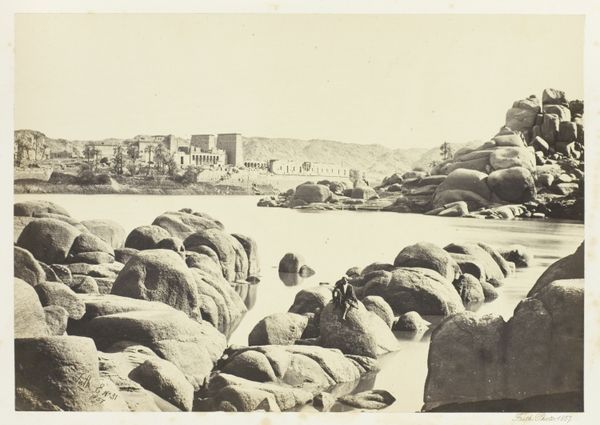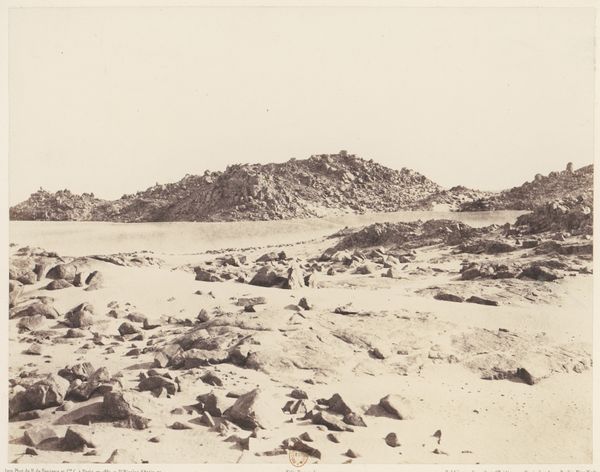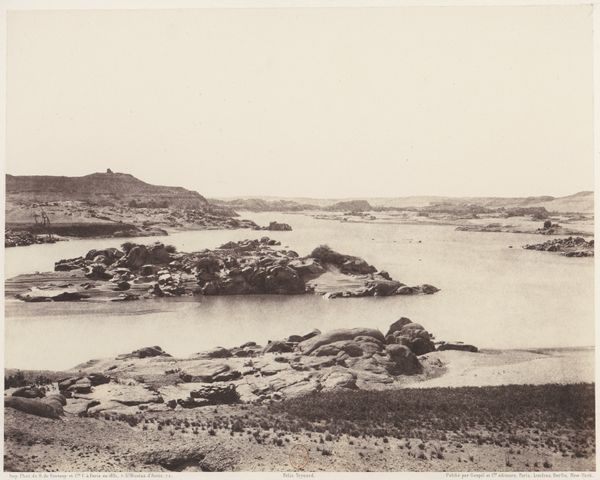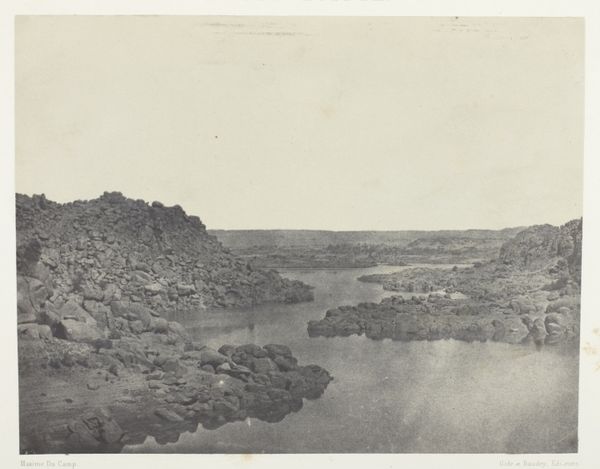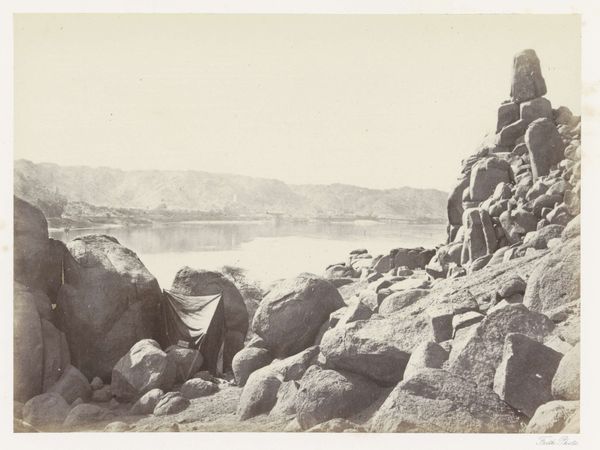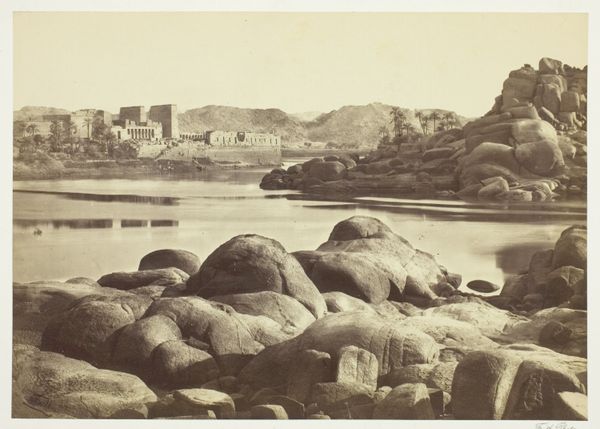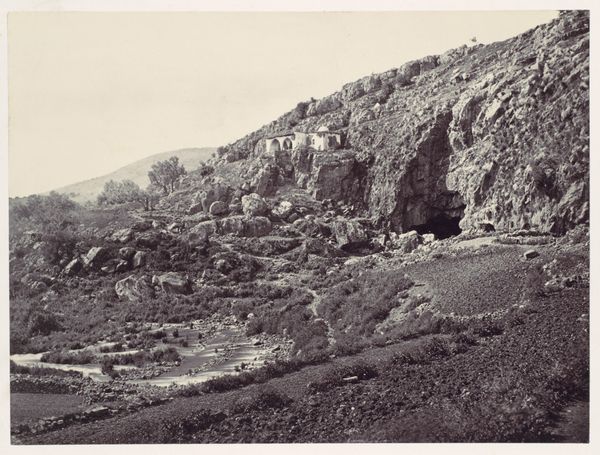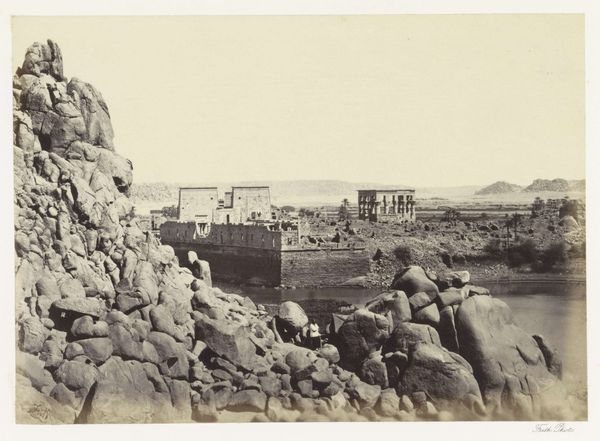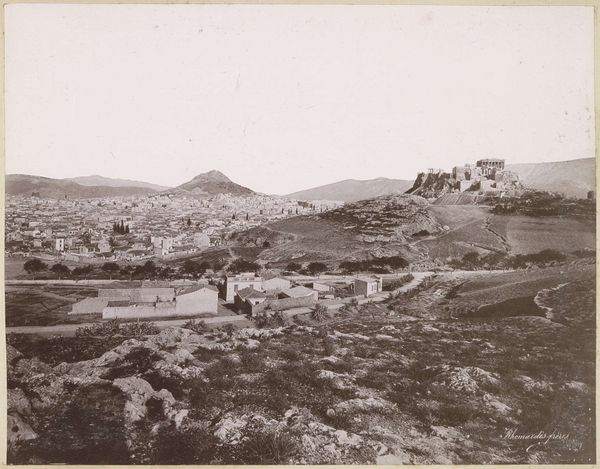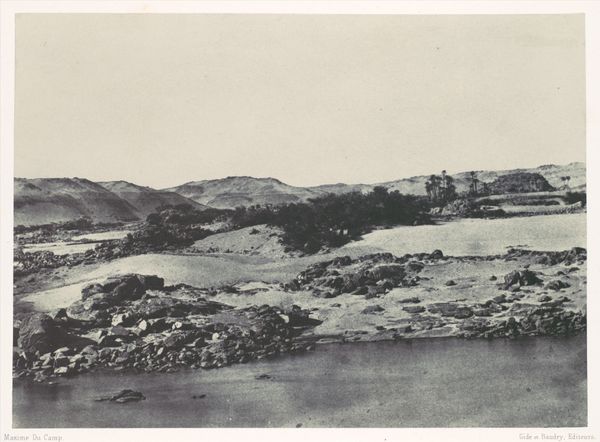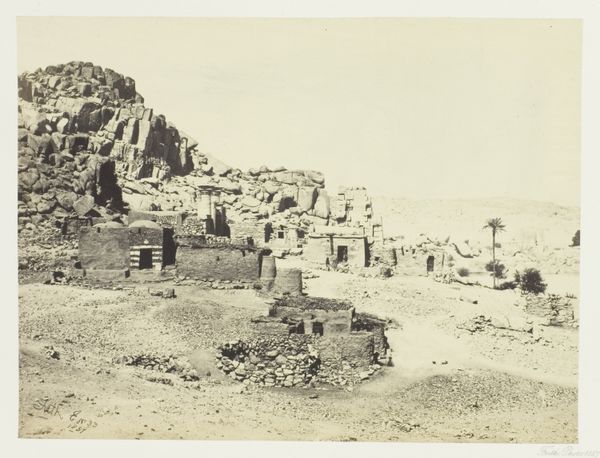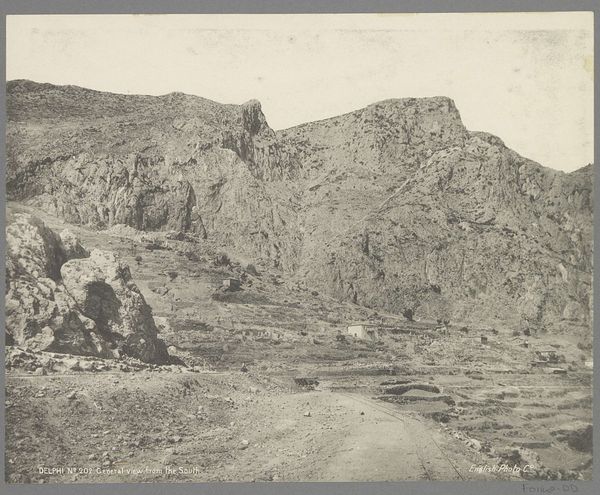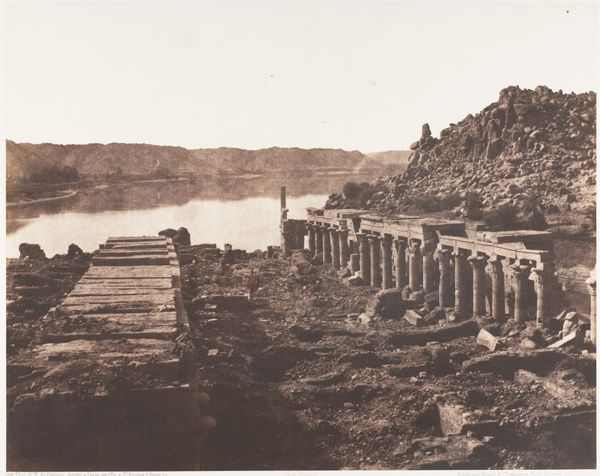
Tâfah, Rochers Granitiques sur les Rives du Nil 1851 - 1852
0:00
0:00
photography, gelatin-silver-print
#
landscape
#
photography
#
ancient-mediterranean
#
gelatin-silver-print
Dimensions: 24.9 x 30.1 cm. (9 13/16 x 11 7/8 in.)
Copyright: Public Domain
Editor: We’re looking at Félix Teynard’s "Tâfah, Rochers Granitiques sur les Rives du Nil," a gelatin silver print from 1851-1852. It feels so still, almost like a stage set. What’s your take on it? Curator: Absolutely. It's not just a landscape; it's a document of a moment steeped in colonial ambition. Think about who's behind the camera and why. Teynard was part of a larger project of surveying and “knowing” Egypt, aligning with European powers extending their reach. How do we reconcile the aesthetic appeal of the scene with its embedded power dynamics? Editor: So the "stillness" I'm feeling might reflect a specific viewpoint or intention? Curator: Precisely. The image seems to strip the landscape of any present inhabitants. Instead, it centers the perceived ancient grandeur of Egypt. Note the gaze is oriented on resources rather than its current inhabitants, inviting viewers to consider its potential. What impact do you think that framing had, considering when and for whom this photograph was made? Editor: It feels like the local people are absent and their histories are removed or not taken into consideration... This shot focuses on "timelessness" for an external, European, audience? Curator: Yes, the strategic framing participates in a longer history of exoticizing the Orient for Western consumption. We must be critical of this viewpoint in relation to historical power dynamics. Are there ways to reframe Teynard’s photograph, maybe focusing on the resistance or resilience of those whose stories are often unheard? Editor: It's interesting to consider how what seems like a simple landscape photograph is so loaded with political and social implications. It forces a reconsideration. Curator: Exactly. Examining the silences, omissions, and framing of images like this allows us to grapple with the complexities of history and representation, especially as photography itself became a tool of power. Editor: I'll definitely look at other landscapes differently after this. Thanks for the fresh insight!
Comments
No comments
Be the first to comment and join the conversation on the ultimate creative platform.
